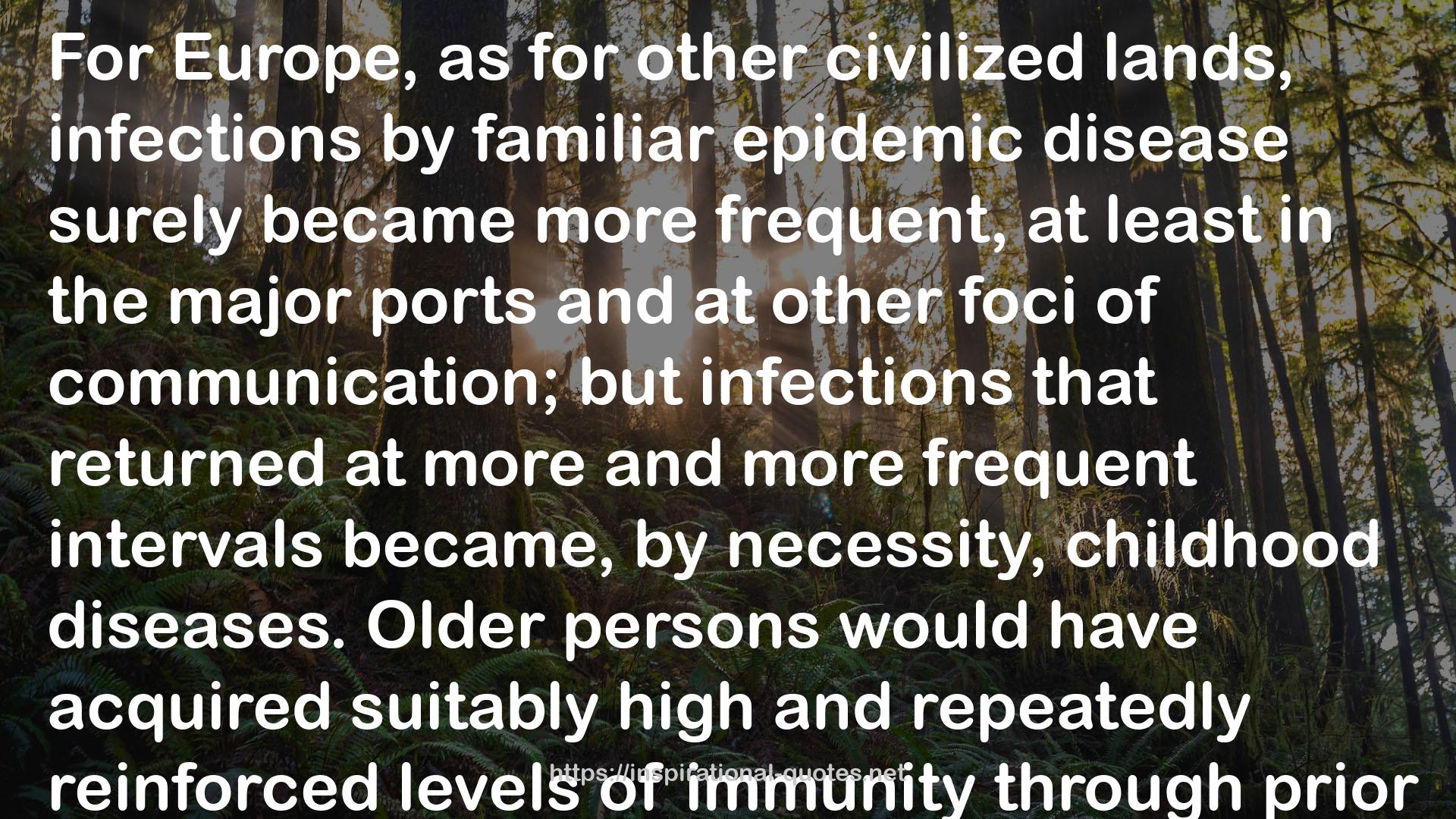" For Europe, as for other civilized lands, infections by familiar epidemic disease surely became more frequent, at least in the major ports and at other foci of communication; but infections that returned at more and more frequent intervals became, by necessity, childhood diseases. Older persons would have acquired suitably high and repeatedly reinforced levels of immunity through prior exposures. Thus by a paradox that is only apparent, the more diseased a community, the less destructive its epidemics become. Even very high rates of infant mortality were relatively easily borne. The costs of giving birth and rearing another child to replace one that had died were slight compared to the losses involved in massive adult mortality of the sort that epidemics attacking a population at infrequent intervals inevitably produce.
Consequently, the tighter the communications net binding each part of Europe to the rest of the world, the smaller became the likelihood of really devastating disease encounter. Only genetic mutation of a disease-causing organism, or a new transfer of parasites from some other host to human beings offered the possibility of devastating epidemic when world transport and communications had attained a sufficient intimacy to assure frequent circulation of all established human diseases among the civilized populations of the world. Between 1500 and about 1700 this is what seems in fact to have occurred. Devastating epidemics of the sort that had raged so dramatically in Europe's cities between 1346 and the mid-seventeenth century tapered off toward the status of childhood diseases, or else, as in the case of both plague and malaria, notably reduced the geographic range of their incidence.
The result of such systematic lightening of the microparasitic drain upon European populations (especially in northwestern Europe where both plague and malaria had about disappeared by the close of the seventeenth century) was, of course, to unleash the possibility of systematic growth. This was, however, only a possibility, since any substantial local growth quickly brought on new problems: in particular, problems of food supply, water supply, and intensification of other infections in cities that had outgrown older systems of waste disposal. After 1600 these factors began to affect European populations significantly, and their effective solution did not come before the eighteenth century - or later.
All the same, the changing pattern of epidemic infection was and remains a fundamental landmark in human ecology that deserves more attention than it has ordinarily received. On the time scale of world history, indeed we should view the 'domestication' of epidemic disease that occurred between 1300 and 1700 as a fundamental breakthrough, directly resulting from the two great transportation revolutions of that age - one by land, initiated by the Mongols, and one by sea, initiated by Europeans. "
― William H. McNeill , Plagues and Peoples
